Grave of ‘VAMPIRE’ with sickle around neck to prevent ‘return from the dead’ found under stone with skull engraving in Polish church
- Medieval belief in vampires became so widespread that it caused mass hysteria
Archaeologists investigating a church in northern Poland have discovered a ‘vampire grave’ buried beneath the floor, in what they say is the first discovery of its kind.
The skeletal remains of a 17th-century man were found in the Church of the Annunciation of the Blessed Virgin Mary in the small village of Pączewo, after archaeologists discovered a stone slab with an engraving of a skull.
About two meters below the slab they found three skeletons. One of them had a sickle around his neck, a medieval custom to prevent vampires from returning from the dead.
According to anthropologist Justyna Kargus, the skeleton’s skull showed signs that the man, who was believed to be around 50 years old when he died, had suffered some form of trauma before his death.
She said: ‘There were numerous injuries to his skull, indicating he probably had deep scarring to his face.
Archaeologists have discovered a grave in a Polish church containing a ‘vampire’ with a sickle around his neck to prevent him from ‘returning from the dead’ under a stone with a skull engraving
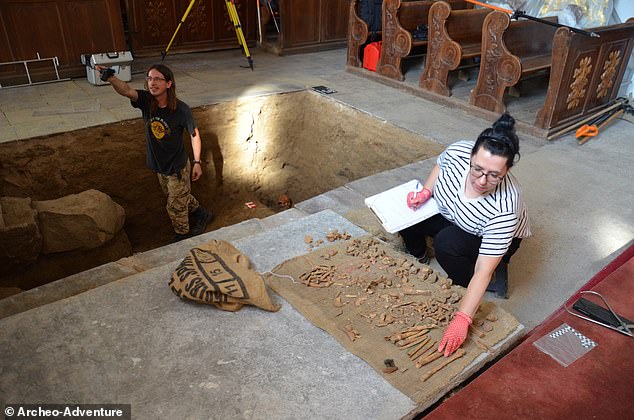
In the Church of the Annunciation of the Blessed Virgin Mary in the small village of Pączewo, the skeletal remains of a man from the 17th century were found
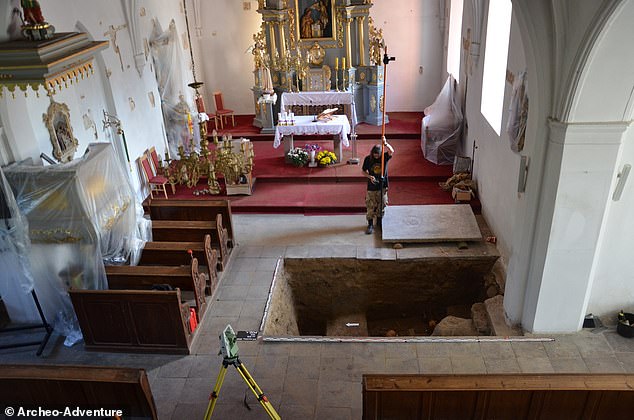
Putting a sickle around the neck of a dead person was a medieval custom to prevent people thought to be vampires from rising from the dead.
‘In one of the blows he also lost some teeth. He looked different from the average person and that can be scary.
She added that the discovery of a vampire burial in a church is extremely rare: ‘Nobody expects to find a vampire in a church.
“This is the first known case of an anti-vampire funeral in a church.”
‘People suspected of being vampires were normally buried in places outside the local community or in cemeteries.
‘Clergy, benefactors of the church, worthy and particularly deserving people were buried in the church.
‘Maybe he was someone of standing in the local community, and there was something that made them fear him.’
Reports of myths about the dead date back to the 11th century in Central and Eastern Europe. People feared that some who had been buried would emerge as blood-sucking monsters and terrorize the living.
It is not uncommon in the region to find cemeteries where a metal rod – or stake – has been driven through the skull of the deceased. People at the time believed that this was a way to ensure that the person remained dead.
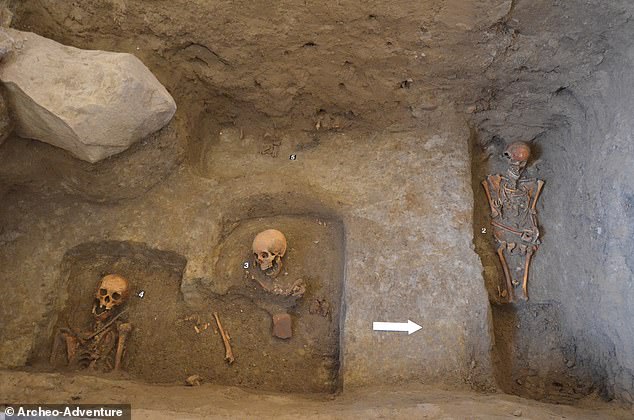
Three skeletons were found in the church in the town of Pączewo
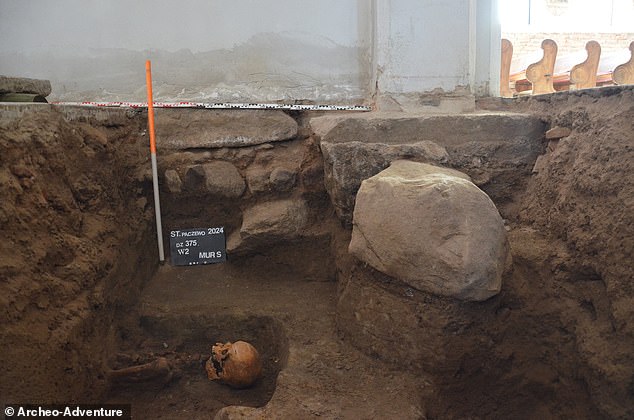
People feared that some of those buried would rise to the surface like blood-sucking monsters and terrorize the living.
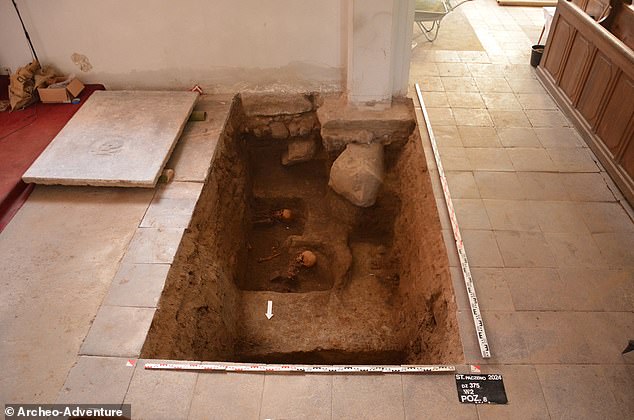
In some parts of the continent – particularly among Slavic peoples – belief in the legends of vampires became so widespread that it caused mass hysteria
In some parts of the continent – particularly among the Slavic population – belief in vampire legends was so widespread that it caused mass hysteria, even leading to the executions of people thought to be vampires.
People who died prematurely, such as by suicide, were often also suspected of vampirism. Their bodies were mutilated to prevent them from rising from the dead.
Various procedures were used to prevent them from returning from the dead. Some placed a sickle around the neck, others saw the corpse tied up, placed padlocks on the body, coins placed over the eyes, the body wrapped in fishing nets, or the bodies crushed with stones or bricks.
The latest discovery is the latest in a string of vampire finds in Poland. Earlier this month, the decapitated remains of a “vampire child,” buried face down, were discovered more than 370 miles away in the southeast of the country.
In 2023, a mass grave containing more than 400 decapitated suspected vampires was discovered during roadworks in northeastern Poland, with their skulls between their legs and a coin in their mouths.
The skeletal remains of another “vampire child” were found later that year in the village of Pień. She was lying face down with a triangular padlock on her foot. Archaeologists had previously found the remains of a “female vampire” there, pinned to the ground with a sickle across her throat and a padlock on her toe.
